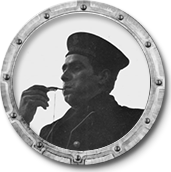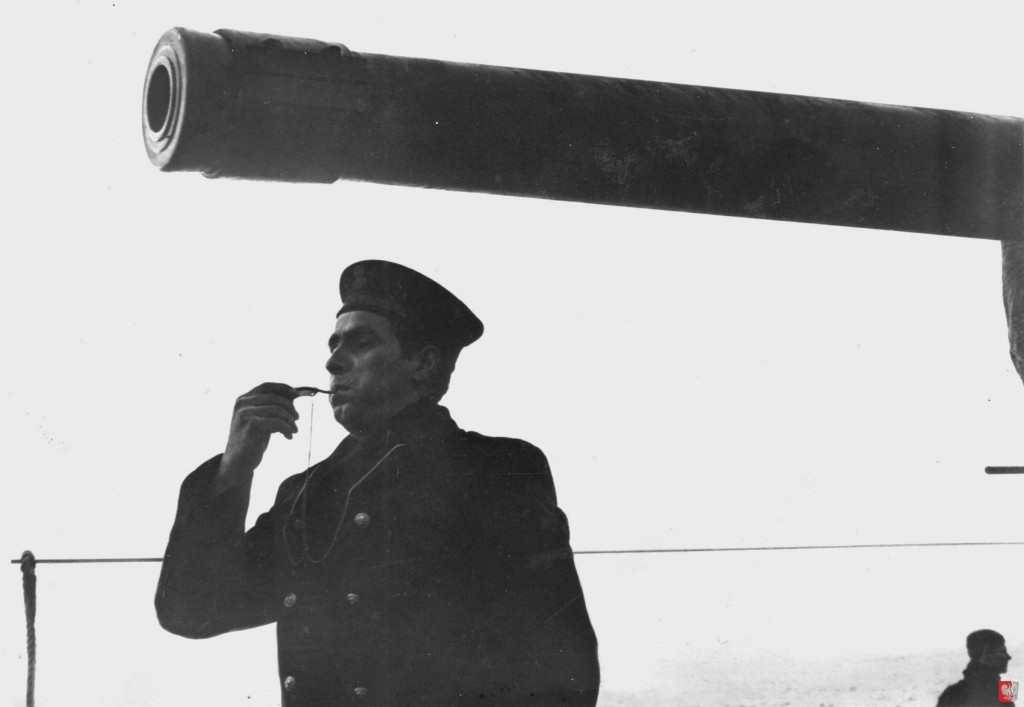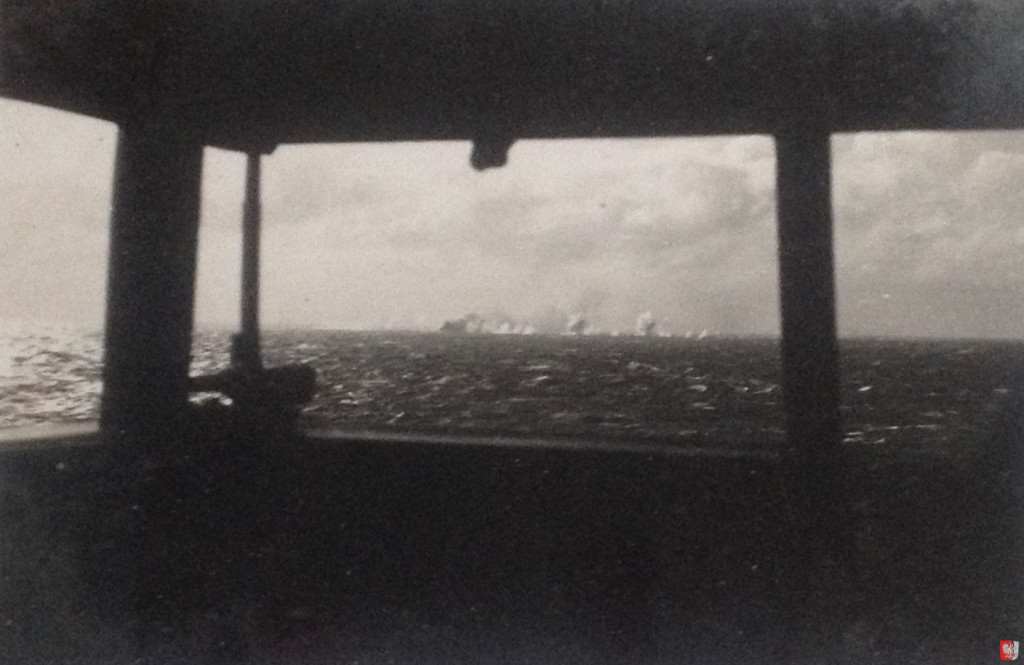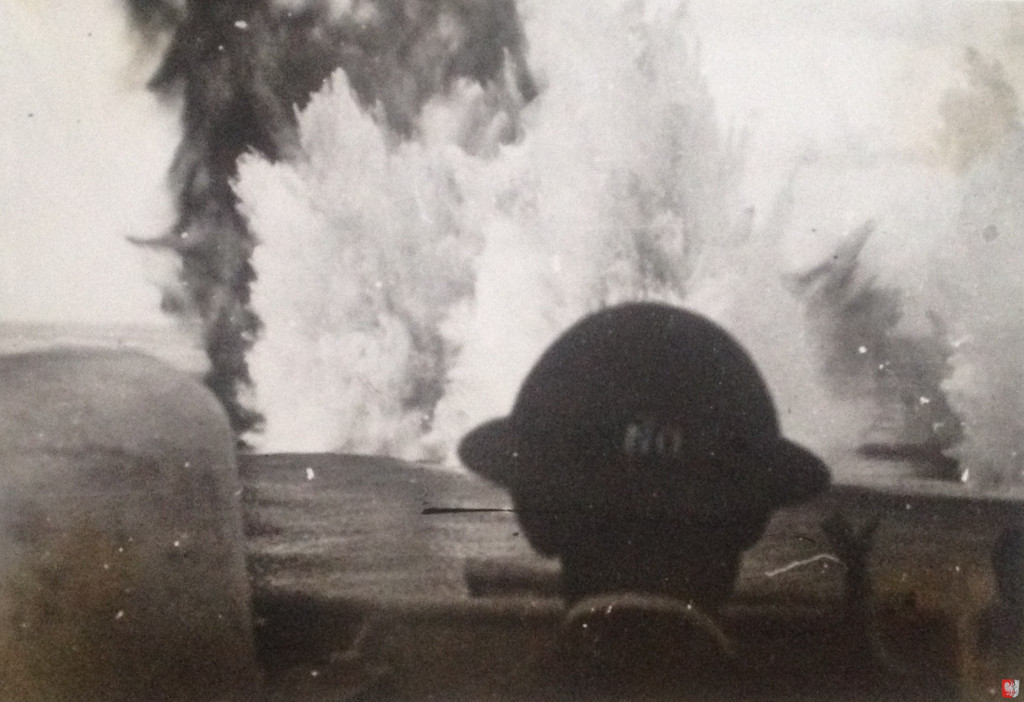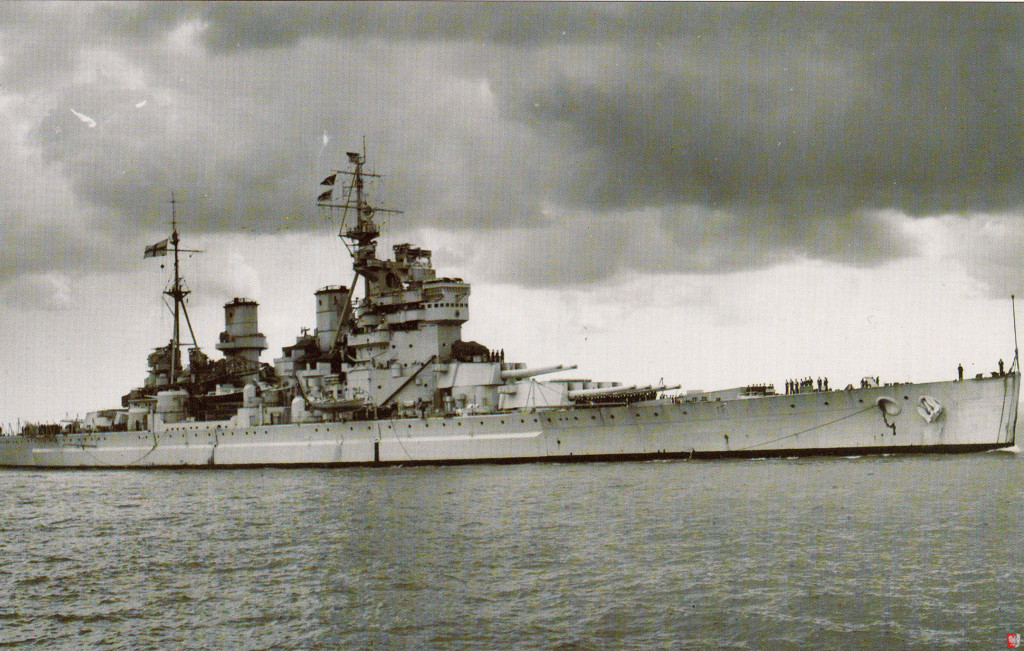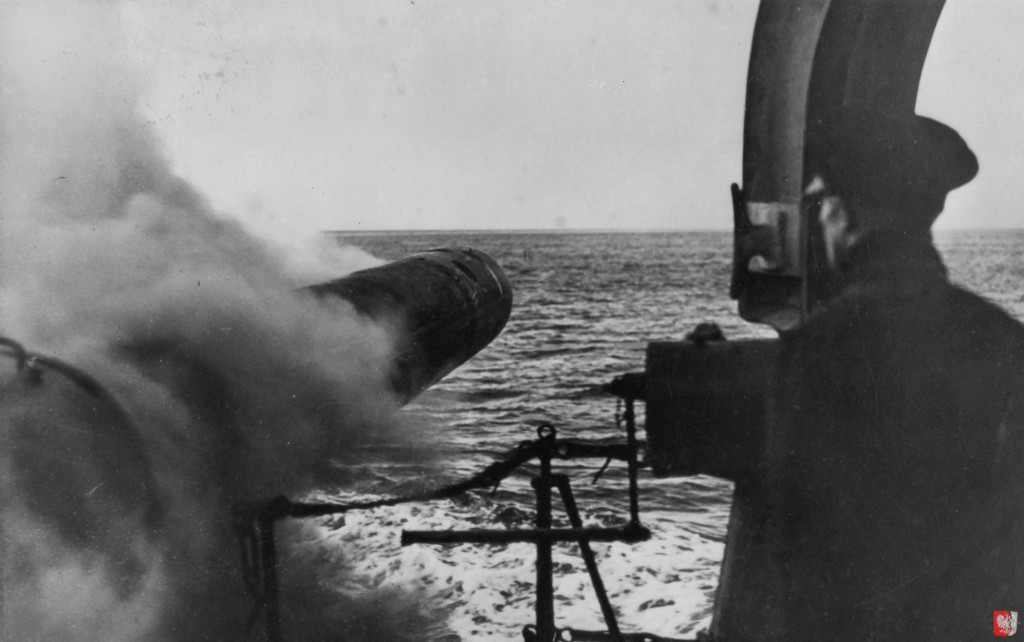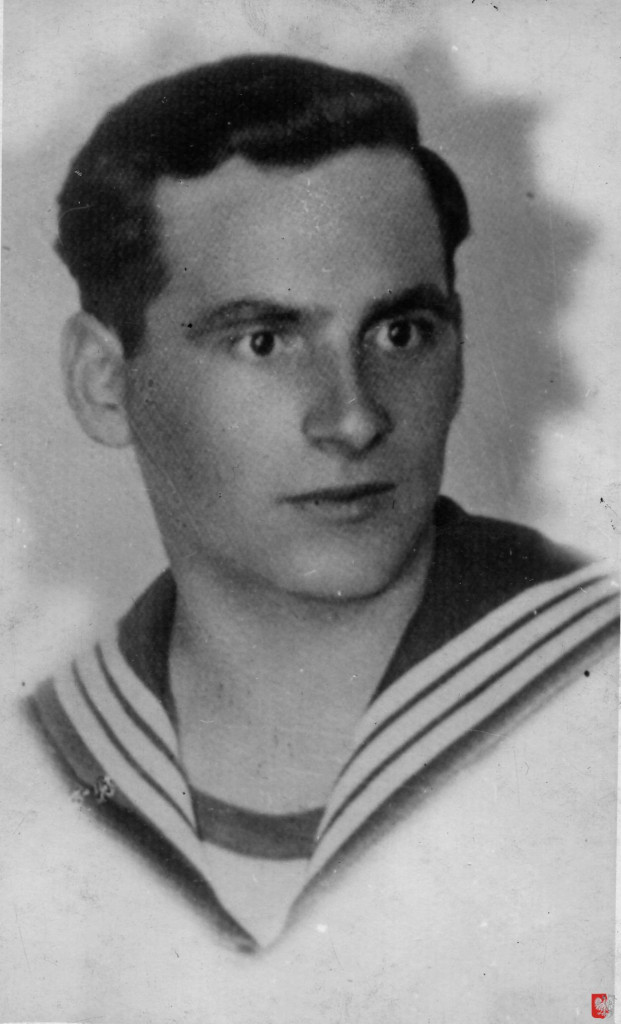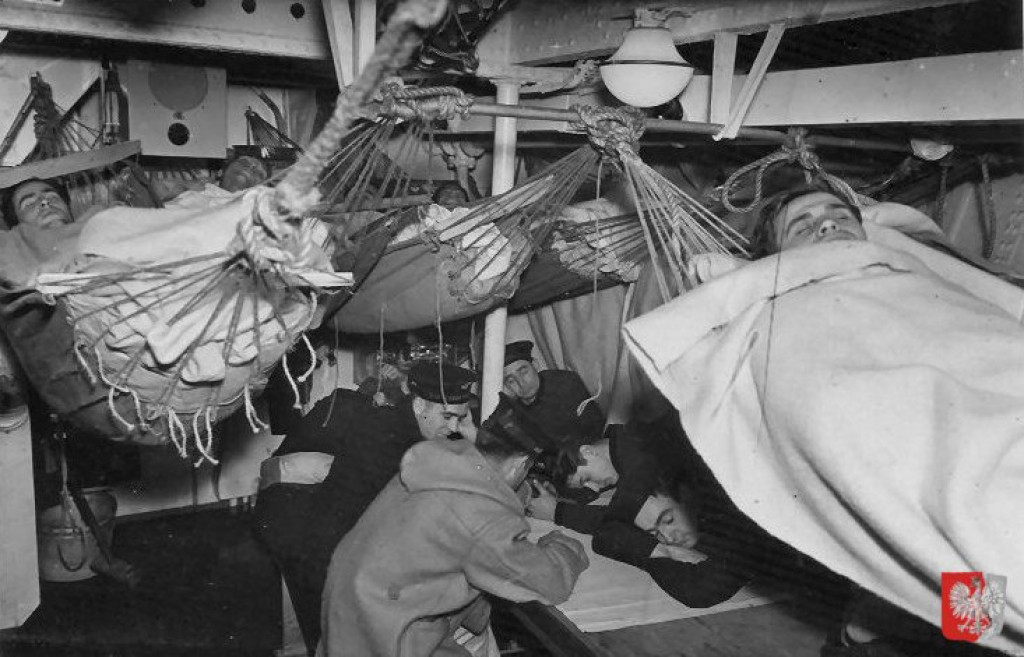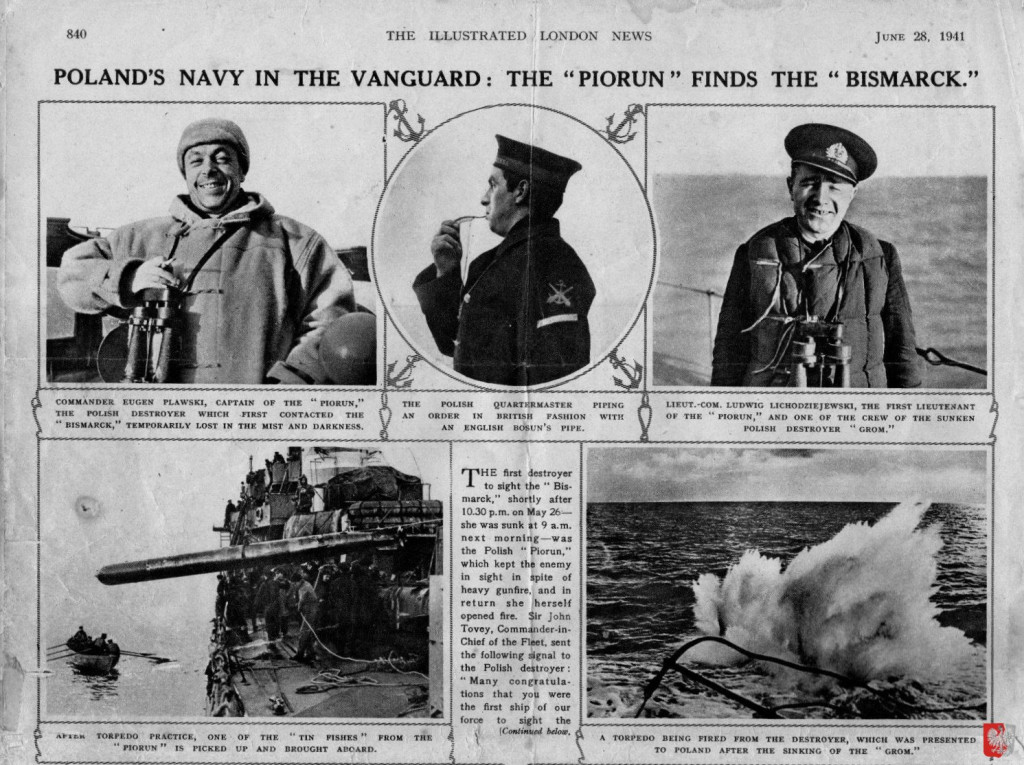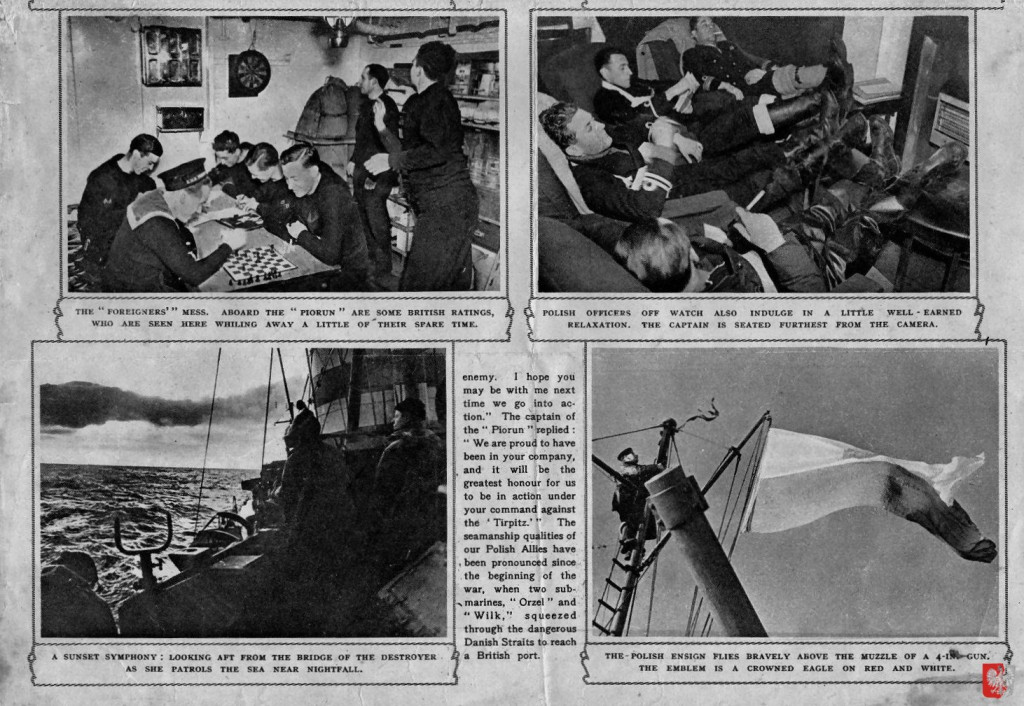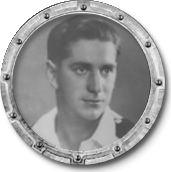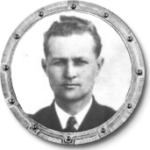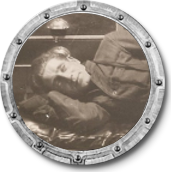
Polish Naval Memories of WWII
“Bismark’s guns opened fire on the starboard side. The gunfire was very intense and of planned precision to create an impenetrable AA screen. Bismark was under attack by torpedo carrying Swordfish planes. In two separate attacks the planes dived towards Bismark. I did not see what fate befell those planes because the bursting shells and the big hell of Bismark obscured my vision and I did not see any hits, as those would have produced a high plume of water above the sides of the battleship. Two Swordfish planes carried out a torpedo attack on Bismark, leaving the bank of cloud in the west behind the battleship, and dropped their torpedoes on target. Both planes flew very low, almost touching the water, and after releasing their torpedoes banked to port to escape safely along portside of Bismark. Only one torpedo was successful and exploded on the starboard edge on the stern. All through this time Piorun was at full speed, closing up for another torpedo attack to fire them whenever the tubes were reloaded.
Bismark’s four 15” guns began firing at Piorun, the big shells were passing over above the mast height with terrifying noise. Piorun weaved from side to side in attempt to avoid being hit. The situation was eerie. The familiar colour of paint on the destroyer, called battleship grey, was changed by reflecting continuous orange flash of Bismark’s guns into a hideous colour of deep blood-red – even the motionless figures of the gun crew were similarly transformed, creating a vision suitable more for a scene from ‘Dante’s Inferno’ than life on the ocean wave.
… At last there was to be some action – I thought – when I overheard the C.O. giving order to Sub. Lt. of artillery that number one gun was to get ready to fire. The order to fire came with instruction that I was to pick my own target on the bridge of Bismark. I was glad of a previous experience during the Blitz on Clydebank; then I had been on the bridge of the battleship Due of York and that gave he an insight to the layout of a battleship and thus where to aim. I picked my target, the second oblong window on the bridge from the stern end, where I imagined the control centre was. The distance between the destroyer and the battleship was so close that, owing to high magnification of the gun sight, I would see only a very small portion of the huge bridge, and had to align by the barrel of the gun first to assure myself I was on focus. The C.O. turned the ship to port and slowed down, thus making it easier for me to aim and hit the bridge. I fired three salvos and sent six shells on target. I heard each hit confirmed by the sub-lieutenant on the bridge. To my surprise I was ordered to stop firing. I was attracted towards the stern by flashing lights and against the eastern sky I was a destroyer and then another one come into view. Both were signalling, demanding Piorun’s withdrawal. Piorun was on course for Bismark with torpedoes reloaded and ready to fire and the C.O. was determined to continue the action. Our ship was so close to Bismark that looking up I could not restrain myself and shouted – “Jaka to stodata” – what a barn. A moment later I was surprised to see alongside between Piorun and Bismark the famous Cossack. With skilled manoeuvring, with flashing signals and with smoke pouring from her stern, she forced Piorun to turn to port and follow her hidden in smoke in a sweep eastward. When the smoke cleared I saw four British destroyers, Cossack, Maori, Sikh and Zulu, about three miles out on the western flank. Bismark was about the same distance to the north of them and northwest from Piorun. Bismark was moving slowly. The British destroyers in turn, one after another, made torpedo attacks on Bismark. Piorun was not asked to participate … Until three in the morning there was no further action. Bismark continued her slow progress south west, her anti-aircraft guns kept on firing through the night.
Regarding the action of Piorun an officer on the bridge of the Cossack noted, “quite suddenly, almost unbelievably, in the failing light, the wing ship, the Polish Piorun opened fire” (Piorun was the port lead of the four destroyers under Vian). Later the RN magazine “Ditty Box” wrote,
“none of the destroyers which attacked Bismark will ever forget the almost crazy bravery of Piorun, which wanted to take on the battleship single-handed.”
The official Admiralty report noted that,
“The Commanding Officer of the Piorun had not worked with the 4th Destroyer Flotilla before… and (he and the British naval liaison officer on board) was not conversant with their methods. He had drawn Bismark’s fire for an hour during the period of dusk hoping that this would assist the other destroyers to get in their attack… The conduct of the night operations by these five destroyers was a model of its kind. In heavy weather, frequently under fire, they hung on to their prey with utmost determination, hit her with torpedoes and delivered her (to the fleet) next morning…”
It ultimately mattered not whose torpedoes crippled the Bismark, but to the Poles it was a matter of honour that one of their vessels took part in the battle. Vice Admiral Lutjens, who went down with his ship, was the senior officer of the German destroyers which had attacked the old Polish destroyer Wicher and minelayer Gryf in the Gulf of Gdansk in September 1939. Cdr. Pławski of ORP Piorun received the DSC.
From Poles Apart: Polish Naval Memories of World War Two by Martin Hazell
